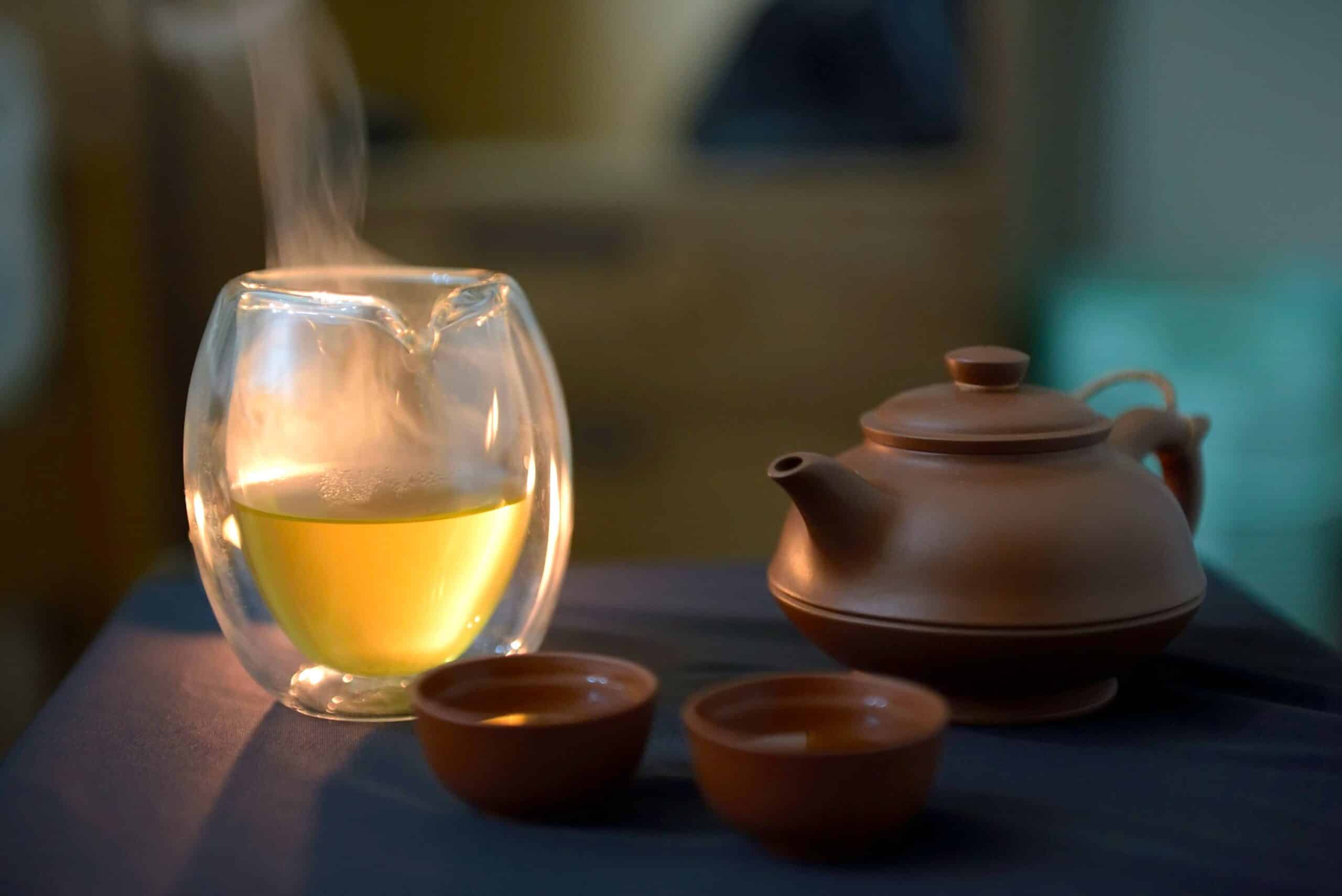For thousands of years all across Asia, making tea could be likened to yoga practice. Brewing a fine cup of chai includes all the hallmarks of yoga–patience, stillness, an attitude of respect, and refined sensory awareness. The art of tea involves the process of fusion, steeping the leaves so that the full flavor of the tea is awakened, whether it be sencha, matcha, Darjeeling or Jasmine. Our favorite is Ti Guan Yin, an oolong tea known as “Iron Goddess of Mercy.” First you have to submerge your tea leaves in a water temperature that is not too hot and not too cool. In the same way, a yoga posture needs “right heat” to open. If there is excess heat, you can scald your tissues producing soreness and achiness. If the water temperature is tepid and the posture weak, the pose tastes bland.
A good cup of oolong requires steeping the leaf buds until they release their inherent flavor. It is the same with a yoga pose. Each asana has its own unique “taste” known as rasa. Rasa is a beautiful word in Sanskrit meaning distillation, vital essence, flavor, or sentiment. When practicing halasana (plough), matsyasana (fish) or any other posture, stay long enough– usually 2 to 3 minutes– until the unique flavor of the pose is revealed. The art of tea requires alchemical fusion. When the leaf buds relinquish their tight grip, the aroma of “one taste” pervades the entire cup of tea. In the beginning of a yoga practice, the body is like a tight, compact tea bud. You must suffuse your tissues in vital fluid for your clenched tissues to relax and expand. When every fiber, every cell and gland are soaked in internal fluid, you will experience “one taste” within the pose. Like a fine cup of tea, your body-mind will mellow and a brighten leaving an after taste that is smooth and fragrant.
So each day when you enter your tea room or yoga space, immerse yourself thoroughly. Drench and soak every particle of your being. Steep your tissues, open your palate, and savor the delicate taste of life’s fluid essence.



